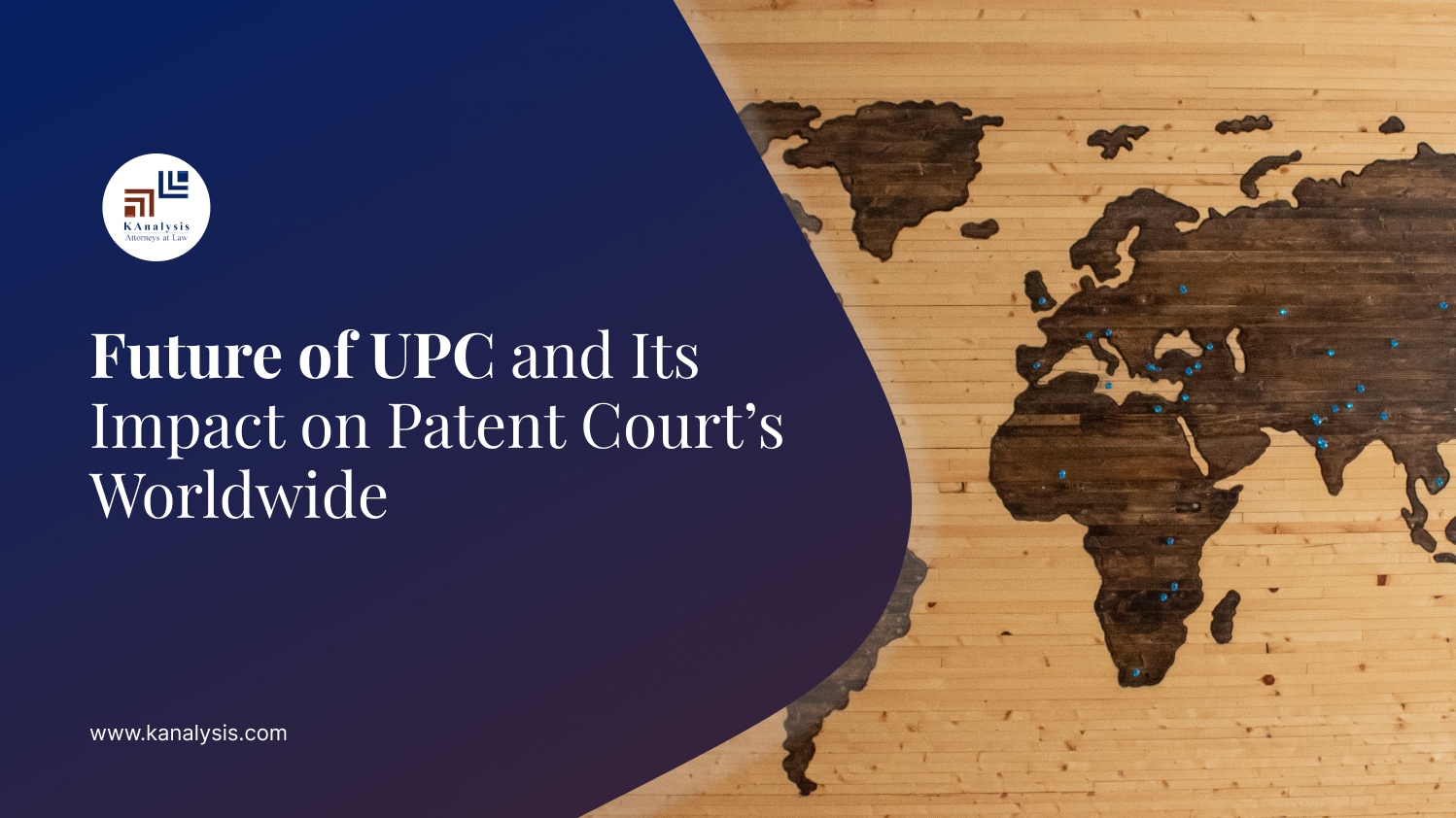How will the Unitary Patent system simplify and improve the European patent system for the benefit of its users? This has been a major point of contention for various stakeholders across Europe as well as globally. The UPC will be a unique and dedicated international patent court formed to resolve disputes relating to both European patents and unitary patents. States that have ratified the agreement will fall under its purview. The UPC will not only have exclusive jurisdiction over unitary patents but will also mean that a sizable portion of Europe will have a one-stop centre for patent litigation. Local and regional UPC divisions located throughout Europe and operating under a single centralized judicial framework will be in charge of making decisions. UPC will ultimately affect:
- Currently granted and validated European Patents;
- Applications presently pending at the European Patent Office;
- Future European patent filings.
In our previous blog we have extensively covered the key highlights of UPC (available here) as well as various opportunities and challenges available with pharma sector with the introduction of UPC in Europe (available here).
EXPECTATIONS FROM UPC IN EUROPE
Many courts in Europe have a well-established record for handling patent cases, including those in France, Germany, the United Kingdom, Holland, and Italy. The European Patent Office (EPO) likewise has a solid reputation for its legal precedent, and is the parties preferred forums for enforcing or attempting to invalidate European patents. Owing to the region’s size and financial importance, the value of European patents, and the presence of a bench of skilled patent judges and practitioners, Europe will undoubtedly continue to draw a sizable portion of patent litigation globally.
For the holder of a European patent to enforce that patent across participating EU nations, the UPC is anticipated to offer a quicker and affordable central litigation platform. The substantial cost and paperwork savings, as well as the increased legal certainty, would undoubtedly result in “greater quality in the patent regime”.[1] Consequently, enforcement might take place in a single, reasonably quick action, eliminating the need for a proprietor to conduct simultaneous actions in all participating EU nations.
Additionally, a “sunrise period” that gives owners of current European patents a three-month window to choose not to participate in the UPC is projected to begin on 1st March, 2023 (discussed in our previous blog). As a result, European patent owners should make a decision regarding whether to opt some or all of their European patents out of the UPC’s jurisdiction well in advance of the conclusion of the sunrise period. As a large number of opt out requests are anticipated at the end of this period, it is always advised to act earlier rather than later to assure that they are completed in a timely manner.
Furthermore, UPC is also expected to bring some ray of hope for the SME’s in Europe. It can be fairly articulated that the impact European patent system has on SME’s[2], which represent 99% of all businesses in the EU (almost 93.5% of which are micro entities)[3] and account for more than half of Europe’s GDP, cannot be ignored without any comment. One issue that hinders intellectual property protection for SME’s is their lack of capital for expensive and time-consuming registration and litigation. Thus, it is expected that UPC will be able to provide a resolution on this front and thereby serves SME’s better.
FUTRUE OF UPC AND ITS IMPACT
Though it’s too early to assess the future of UPC prior to its anticipated commencement on 1st June, 2023 but it can be predicted that the UPC will be a basis of precedents for very significant economic bloc, its rulings may be more relevant or influential both globally and with national courts in Europe deciding European patent matters, than the different national courts decisions in terms of European patents. Also, the extent of its jurisdiction might prevent inconsistent decisions in EU patent disputes.
By allowing a single application to the European Patent Office, the UPC seeks to establish a uniform standard of protection for patents among participating member States. The post-grant mechanism for European Patents will be altered, simplifying protection by doing away with the necessity for national approval and translation from within nations that have agreed to the new system.
It would undoubtedly mark the first instance that litigators from several EU nations may argue against each other in patent proceedings. Hence, it will be intriguing to observe how UPC creates its own framework for these litigators. According to Article 24 (1) of the Agreement, the UPC’s decisions will be grounded on the constructive patent law and procedural guidelines of the Agreement, and the UPC’s rules of procedure,[4] EU law, the EPC, international agreements applicable to patents and binding on Contracting Member States, and national law.[5] The judgments of the UPC will, at the very least, directly affect the holders of European patents and those involved in infringement or revocation procedures before the UPC in all participating member States.
In general, legislation, conventions, and norms will be read and enforced consistently, thereby the UPC’s rulings on European patents may frequently be in conformity with national courts’ legal precedent in some or many ways. Because national courts may reach different conclusions about the validity of a European patent, this will significantly alter how patent owners in Europe can exploit both current and upcoming patents. By delivering decisions that are valid beyond the territories of member nations, the UPC will certainly be able to overcome such obstacles.
CONCLUSION
The debut of UPC is drawing closer, so now is the opportunity for European Patent holders, patent applicants, and other stakeholders to examine their standing, evaluate their portfolios, and develop their plans. Companies operating in Europe are being compelled to review their IP strategies in light of the establishment of the Unified Patent Court in 2023. For organizations that rely heavily on patents, UPC will create new opportunities for managing time and costs.
The new approach appears extremely promising on all counts, but it is expected to pose its own set of difficulties. The question of whether to seek unitary protection for ongoing applications, opt out of European Patents, or begin invalidity actions before the UPC requires major decisions. It is also crucial that Patent firms are ready so they can adjust to the new system. They must begin by educating their paralegals and attorneys about the most recent patent system. Additionally, these firms should also try to set up a docketing system for the procedures before the UPC. Thus, it can be said that building a robust patent system on a solid foundation is essential in a universe where innovation performs such a big role.
Subscribe to our monthly newsletter here and read all our blogs here
[1] https://www.epo.org/news-events/news/2022/20221125.html
[2] https://single-market-economy.ec.europa.eu/smes/sme-definition_en
[3] https://link.springer.com/article/10.1007/s40319-021-01123-0#Fn86
[4] https://www.unified-patent-court.org/sites/default/files/upc_documents/rop_en_25_july_2022_final_consolidated_published_on_website.pdf
[5] https://eur-lex.europa.eu/LexUriServ/LexUriServ.do?uri=OJ:C:2013:175:0001:0040:En:PDF


